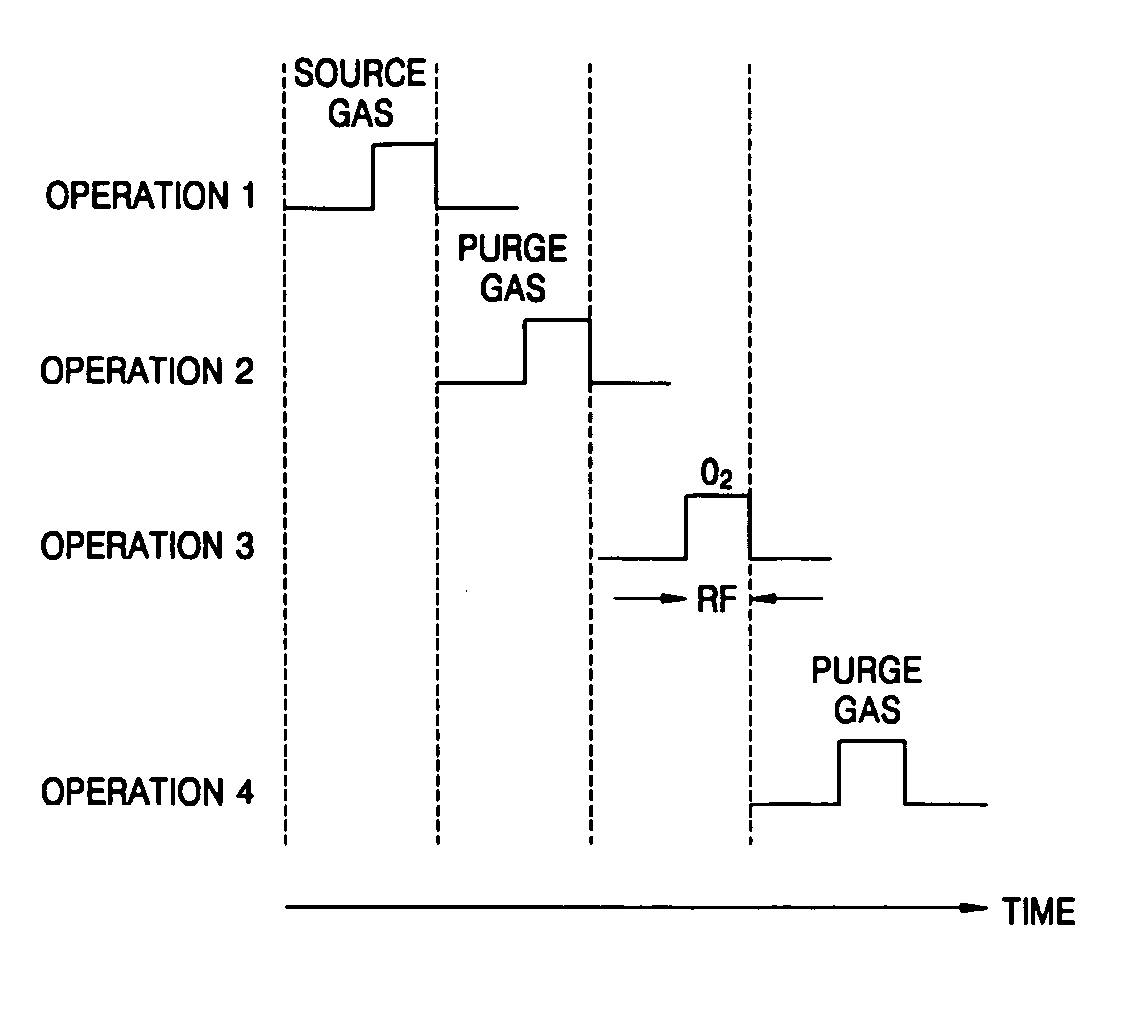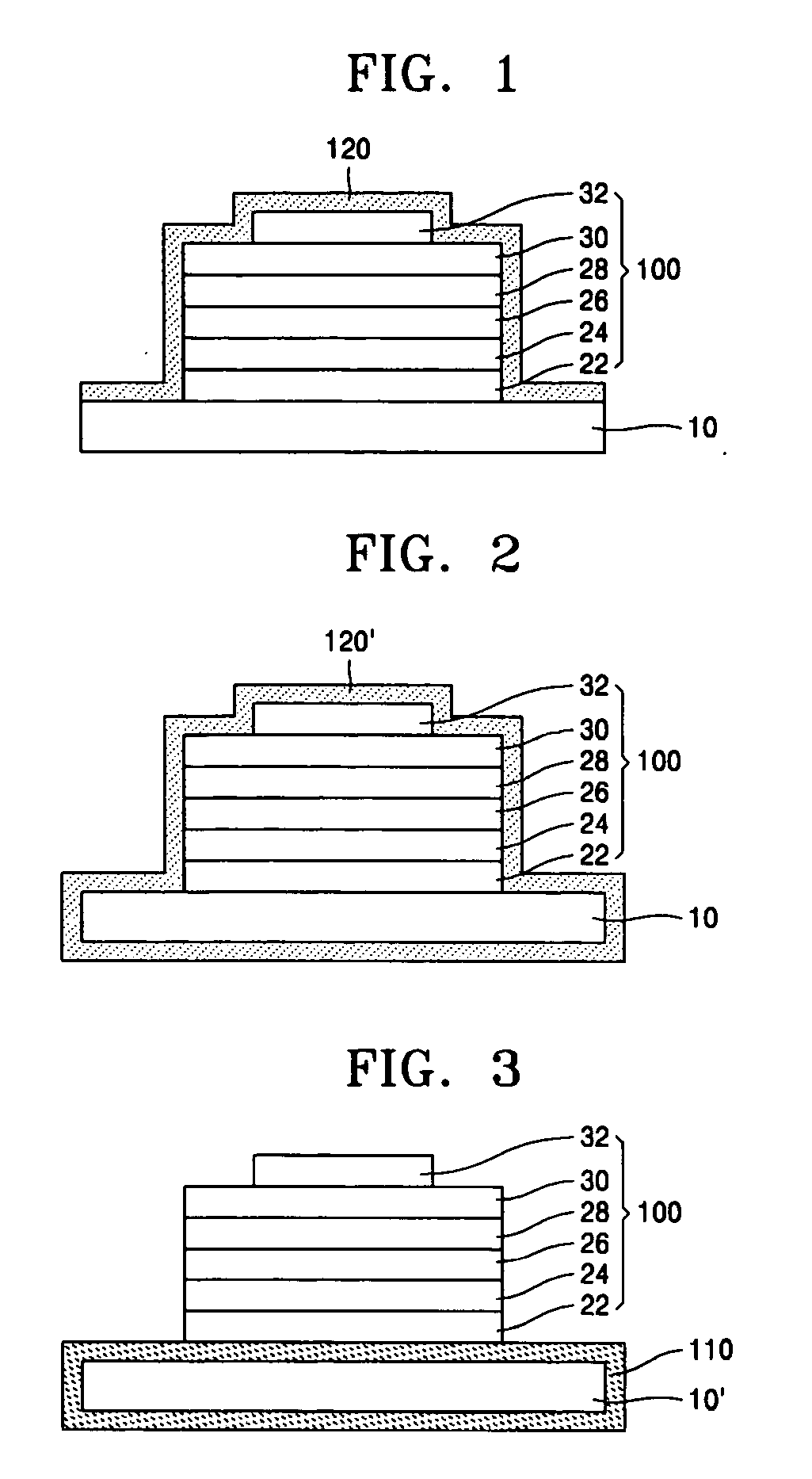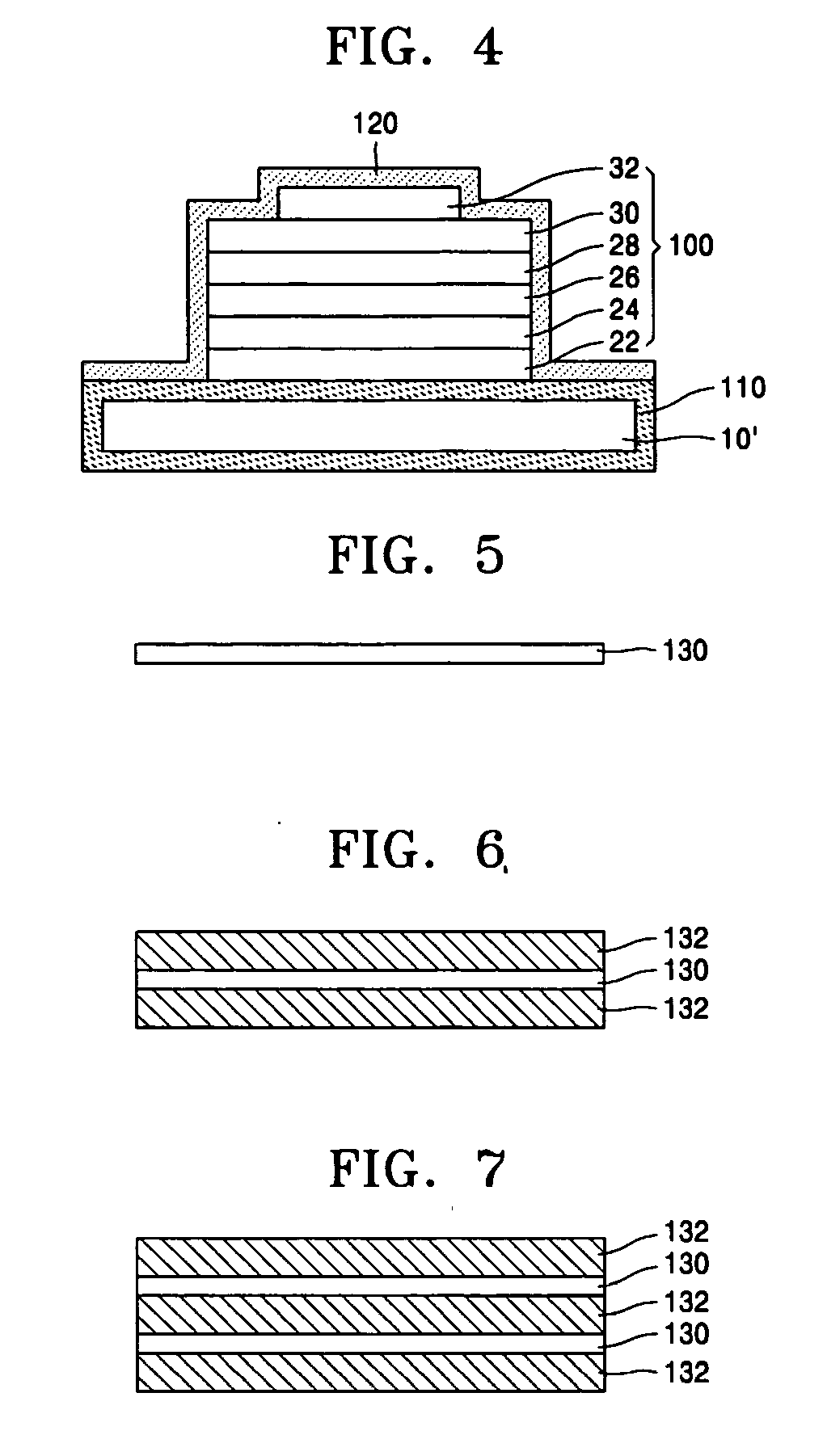Method of fabricating passivation layer for organic devices
a technology of organic devices and passivation layers, which is applied in the direction of semiconductor devices, basic electric elements, electrical equipment, etc., can solve the problems of short life, fast deterioration of devices, and easy deterioration of organic devices, and achieves the effect of weak heat resistance and easy deterioration
- Summary
- Abstract
- Description
- Claims
- Application Information
AI Technical Summary
Benefits of technology
Problems solved by technology
Method used
Image
Examples
experimental example
[0048] An OLED including an anode formed of ITO and a cathode formed of Al was formed on a glass substrate. A hole transfer layer, a fluorescent layer, and an electron transfer layer of the OLED are deposited as a NPB (600 Å) / Alq3 (600 Å) / LiF (10 Å) structure using a vacuum deposition apparatus. An Al2O3:N thin film is deposited on the OLED to a thickness of 100 to 300 nm at a temperature between 40° C. and 80° C. using pulsed plasma enhanced atomic layer deposition. The difference of thickness in the range of 100 to 300 nm did not show any considerable differences in the results. The 40° C.-passivation layer also showed the same result as the 60° C.-passivation layer. FIG. 10 is view illustrating lifetime curves of an OLED with a 300 nm thick-passivation layer and an OLED not including a passivation layer.
[0049] When the plasma pulse time was 0.5 s and the substrate temperature was 40, 60, and 80° C., the maximum temperature during the deposition process of a 300 nm thick-film was...
PUM
| Property | Measurement | Unit |
|---|---|---|
| temperature | aaaaa | aaaaa |
| thickness | aaaaa | aaaaa |
| thickness | aaaaa | aaaaa |
Abstract
Description
Claims
Application Information
 Login to View More
Login to View More - R&D
- Intellectual Property
- Life Sciences
- Materials
- Tech Scout
- Unparalleled Data Quality
- Higher Quality Content
- 60% Fewer Hallucinations
Browse by: Latest US Patents, China's latest patents, Technical Efficacy Thesaurus, Application Domain, Technology Topic, Popular Technical Reports.
© 2025 PatSnap. All rights reserved.Legal|Privacy policy|Modern Slavery Act Transparency Statement|Sitemap|About US| Contact US: help@patsnap.com



